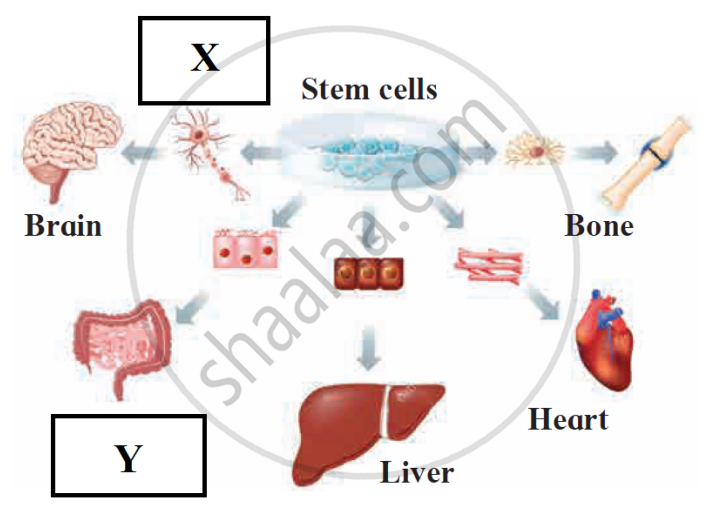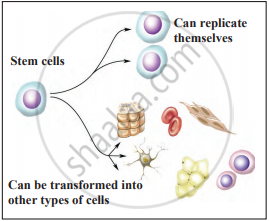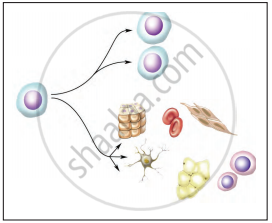Advertisements
Advertisements
Question
Observe the following figure and answer the questions.

- Which property of stem cell is shown in the figure?
- Write the name of the cells or organs denoted by X and Y.
- What is the benefit of tissue/organ culture from stem cells?
Solution
- Pluripotency (the self-multiplying ability of undifferentiated stem cells by which they are capable of giving rise to all types of human cells) is shown in the given figure.
- X: Neuron, Y: Intestine
i. In the given diagram, we can observe that stem cells are capable of forming a variety of new cell types that can combine to form tissues and organs.
ii. With advances in biotechnology, if provided with specific chemicals/stimulus and optimum conditions, stem cells may develop into neurons, brain, intestines, liver, heart, and bone.
iii. These valuable organs could then be used for organ transplantation.
RELATED QUESTIONS
Write the correct answer in blank circles.
At the earliest stage of development, the organism is in the form of a mass of a cell, which are almost alike, those cells are called ____________.
Which of the following factors are considered or need to be paid attention to during organ transplantation?
_____________ is the revolutionary event in biotechnology after cloning.
Cell _____________ starts from 14th day of conception.
____________ are present in the umbilical cord by which the foetus is joined to the uterus of the mother.
Find an odd one out.
The number of different types of cells in the human body that are formed from embryonic cells.
Zygote is formed by union of male and female gametes. Name the cells that are present at the initial stage of development.
What is the importance of stem cells in medical science?
Complete the paragraph.
(red bone marrow, degenerated, umbilical cord, adipose, division, blastocyst)
Different tissues of the body are formed by _______ of stem cells. Stem cells are present in the _______ by which the fetus is joined to the uterus of the mother. Stem cells are also present in the _______ stage of embryonic development. Stem cells are present in _______ and _______ connective tissue of adult human beings. It has become possible to produce different types of tissues and the _______ part of any organ with the help of these stem cells.
Observe the given figure and answer the following questions.

- What is shown in the figure?
- What can the stem cells make in this figure?
- What can these stem cells transform into?
Identify the given figure and label it.

Explain the statement.
The revolutionary phenomenon in biotechnology after cloning is stem cell research.
______ cells are undifferentiated mass of cells.
Distinguish between
undifferentiated cells and differentiated cells
How are stem cells useful in regenerative process?
